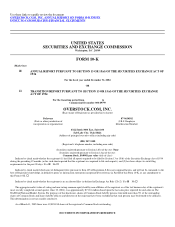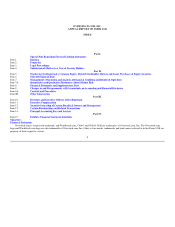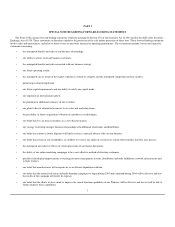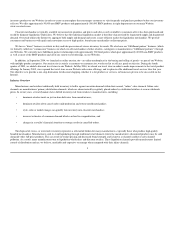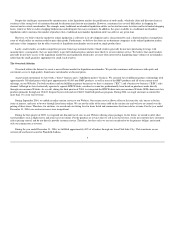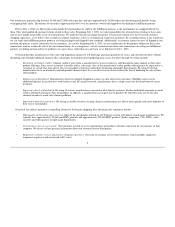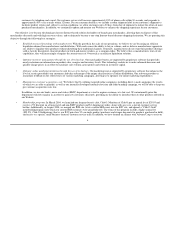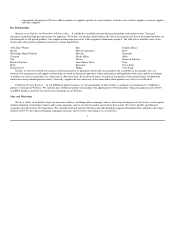Overstock.com 2004 Annual Report Download - page 8
Download and view the complete annual report
Please find page 8 of the 2004 Overstock.com annual report below. You can navigate through the pages in the report by either clicking on the pages listed below, or by using the keyword search tool below to find specific information within the annual report.
Despite the challenges encountered by manufacturers in the liquidation market, the proliferation of outlet malls, wholesale clubs and discount chains is
evidence of the strong level of consumer demand for discount and closeout merchandise. However, consumers face several difficulties in shopping for
closeout and overstock merchandise. For example, many traditional merchandise liquidation outlets are located in remote locations and have limited shopping
hours, which we believe makes shopping burdensome and infrequent for many consumers. In addition, the space available in a traditional merchandise
liquidation outlet constrains the number of products that a traditional merchandise liquidation outlet can offer at any given time.
However, we believe that the market for online liquidation is still early in its development and is characterized by only a limited number of competitors,
some of which utilize an auction model to price their goods. Furthermore, we believe that there are no dominant companies in the online liquidation market,
and many of the companies that do offer overstock or liquidation merchandise are focused on single product lines.
Lastly, small retailers are under competitive pressure from large national retailers. Small retailers generally do not have purchasing leverage with
manufacturers; consequently, they are more likely to pay full wholesale prices and are more likely to receive inferior service. We believe that small retailers
generally do not have access to the liquidation market because liquidation wholesalers are most often interested in liquidating large volumes of merchandise,
rather than the small quantities appropriate for small, local retailers.
The Overstock Solution
Overstock utilizes the Internet to create a more efficient market for liquidation merchandise. We provide consumers and businesses with quick and
convenient access to high-quality, brand-name merchandise at discount prices.
As previously mentioned, we have both a "direct" business and a "fulfillment partner" business. We currently have fulfillment partner relationships with
approximately 380 third parties which post approximately 40,000 non-BMV products, as well as most of the BMV products and all of our current travel
offerings, on our Websites. For both our direct and our fulfillment partner businesses we have a consumer ("B2C") and a business-to-business ("B2B") sales
channel. Although we have historically operated a separate B2B Website, our direct revenue has predominantly been based on purchases made directly
through our consumer Website. As a result, during the third quarter of 2004, we integrated the B2B Website into our consumer Website. B2B clients now buy
products primarily through our Club O frequent buyers club and our Club O Gold bulk purchase program. During 2004, no single customer accounted for
more than 1% of our total revenue.
During September 2004, we added an online auction service to our Website. Our auction service allows sellers to list items for sale, buyers to bid on
items of interest, and users to browse through listed items online. We are not the seller of the items sold on the auction site and we have no control over the
pricing of those items. Therefore, for auctions, we record only our listing fees for items listed and commissions for items sold as revenue. For the year ended
December 31, 2004, our auction revenues were insignificant.
During the first quarter of 2005, we reopened our discount travel store on our Website offering cruise packages. In the future, we intend to offer other
travel products such as flight, hotel, and rental car reservations. For the products or services that we sell in our travel store, we do not currently have inventory
risk or pricing control, and do not directly provide customer service. Therefore, for these sales we are not considered to be the primary obligor, and record
only our commission as revenue.
During the year ended December 31, 2004, we fulfilled approximately 40% of all orders through our leased Salt Lake City, Utah warehouse or our
outsourced warehouse located in Plainfield, Indiana.
4


